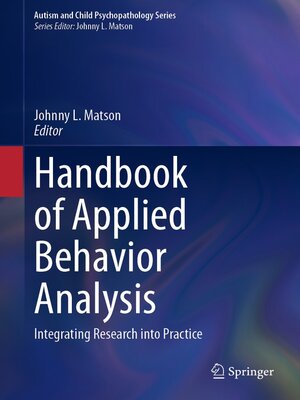Handbook of Applied Behavior Analysis
ebook ∣ Integrating Research into Practice · Autism and Child Psychopathology
By Johnny L. Matson

Sign up to save your library
With an OverDrive account, you can save your favorite libraries for at-a-glance information about availability. Find out more about OverDrive accounts.
Find this title in Libby, the library reading app by OverDrive.



Search for a digital library with this title
Title found at these libraries:
| Library Name | Distance |
|---|---|
| Loading... |
This book provides comprehensive coverage of applied behavioral analysis (ABA). It examines the history and training methods of ABA as well as related ethical and legal issues. The book discusses various aspects of reinforcement, including social reinforcers, tangible reinforcers, automatic reinforcement, thinning reinforcers, and behavioral momentum. It addresses basic training strategies, such as prompts and fadings, stimulus fading, and stimulus pairing and provides insights into auditory/visual discrimination, instructional feedback, generalization, error correction procedures, and response interruption. In addition, the book addresses the use of ABA in education and explores compliance training, on-task behavior, teaching play and social skills, listening and academic skills, technology, remembering and cognitions, picture-based instruction, foreign language instruction, teaching verbal behavior, public speaking, and vocational skills. In addition, the book covers treatments for tics, trichotillomania, stereotypies, self-injurious behavior, aggression, and toe walking. It also addresses ABA for special populations, including individuals with autism, ADHD, substance abuse, and intellectual disabilities.
Featured areas of coverage include:







